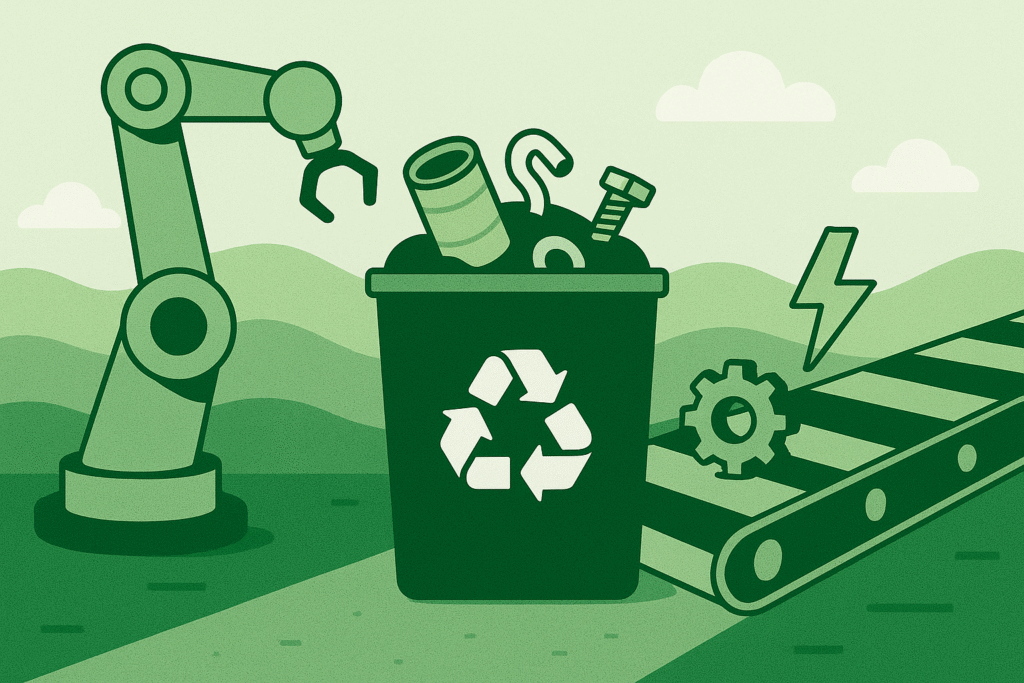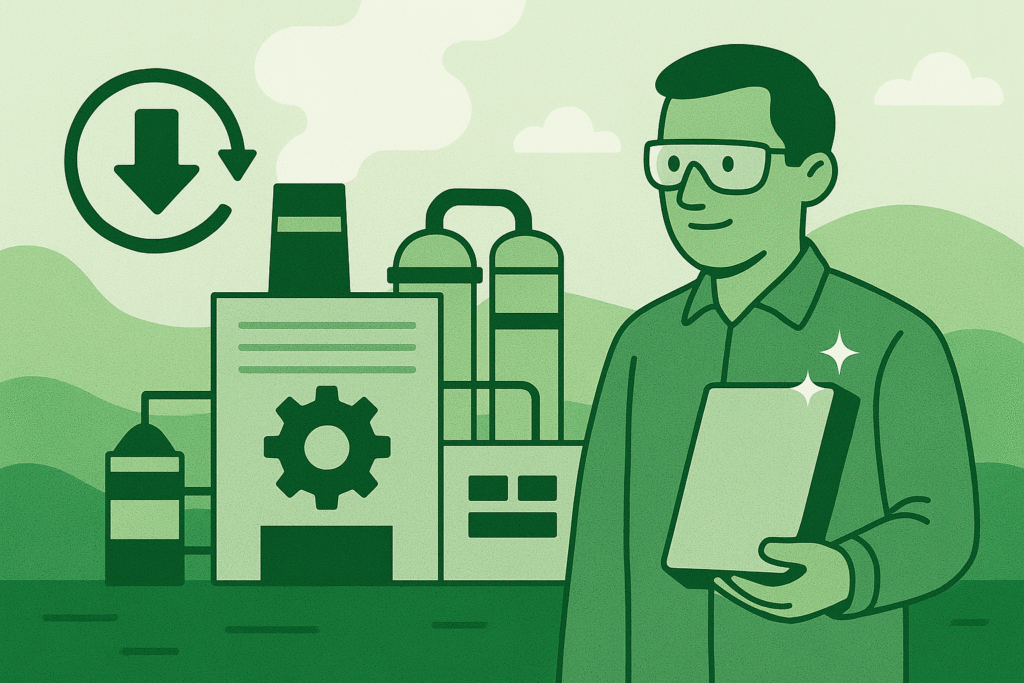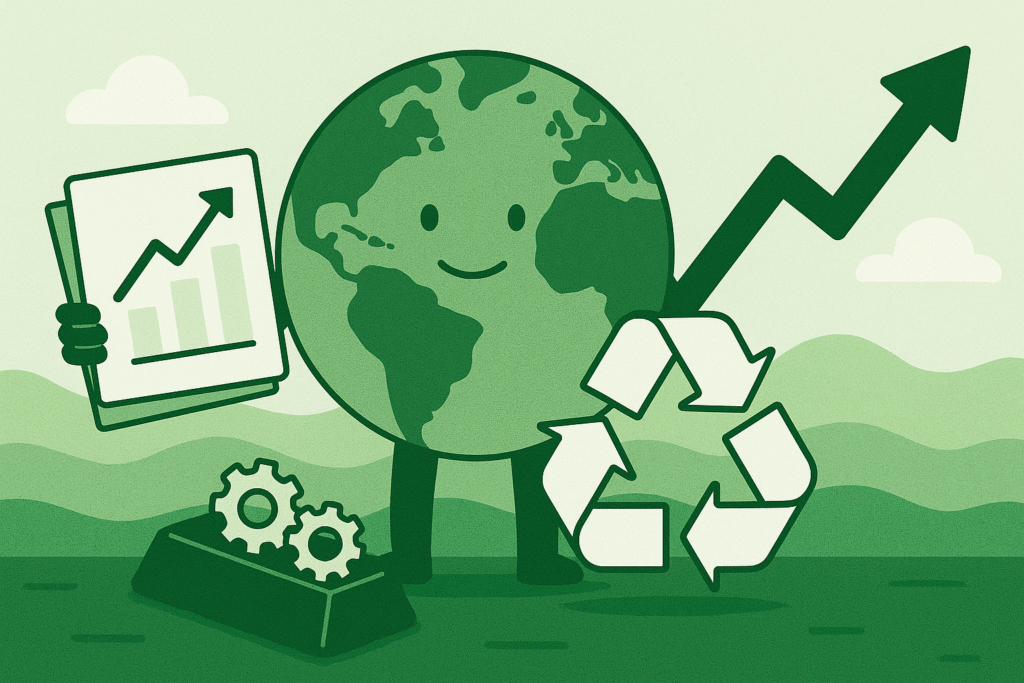Metal recycling is evolving from a niche practice into a cornerstone of sustainable industry. This is especially true for high-tech metals like rubidium, palladium, rhodium, platinum, and cesium. These elements play critical roles in modern technology and industry, yet their supply is limited and often concentrated in a few regions. This article explores emerging trends and innovations in metal recycling, framed around these five focus metals, to highlight how the industry is adapting to meet growing demand in an environmentally and economically sustainable way.
High-Tech Metals in High Demand
All five of Phosmetal’s focus metals are classified as “critical” materials due to their essential uses and vulnerable supply chains. Each contributes uniquely to advanced applications:
- Rubidium (Rb) – Used in specialty glass (e.g. fiber optics) and as an atomic frequency standard in GPS systems and telecom, and even in quantum computing research. Global production of rubidium is very limited, making it a high-value resource for emerging technologies. Its inclusion on critical mineral lists reflects strategic importance amid supply concerns (most rubidium is a byproduct of lithium mining).
- Cesium (Cs) – Essential for extremely accurate atomic clocks (the backbone of GPS timing) and widely used in the oil and gas industry as a high-density drilling fluid (cesium formate). Cesium compounds also improve optical devices and are being explored in quantum computing. However, cesium is rare and primarily sourced from only a handful of mines worldwide, so its supply is highly concentrated.
- Platinum, Palladium, Rhodium (PGMs) – These platinum-group metals are indispensable in many industrial and high-tech applications. They are perhaps best known for their use in catalytic converters that scrub vehicle emissions. PGMs are also critical for chemical production (e.g. platinum-rhodium catalysts in fertilizer and nitric acid plants) and oil refining, and they appear in electronics (hard drives, circuit components, sensors) and medical devices. Despite their ubiquity in modern products, PGMs are mined in only a few countries (mainly South Africa and Russia), leaving their supply vulnerable to geopolitical and economic disruptions. This imbalance of high demand and limited mining locations is why palladium, platinum, and rhodium consistently rank as critical, high-value metals.
Global demand for these metals is rising as industries expand and new technologies mature. For example, rubidium’s niche market is growing due to its role in cutting-edge sectors like quantum electronics and next-generation solar cells. The global cesium market, though small, is projected to nearly double from about $364 million in 2024 to $602 million by 2032 (6.5% CAGR), driven by its strategic importance in high-tech applications. On the precious metals side, platinum, palladium, and rhodium remain in high demand and, in fact, have been in supply deficit in recent years. According to Johnson Matthey’s 2024 PGM report, demand for these PGMs “will continue to outweigh supply,” with platinum facing its largest shortage in a decade. In short, industries from automotive to aerospace are hungry for these materials, but getting enough supply is an increasing challenge.
Why Recycling is Essential (Sustainability and Supply Chains)
Supply constraints and geopolitics: Over-reliance on mined sources for critical metals is risky and unsustainable. Many major mines for these elements are maturing or located in geopolitically sensitive areas. For instance, a huge portion of the world’s palladium comes from a single country’s mines, and rubidium and cesium have historically come from a limited number of sites. It’s no surprise that all five of these metals appear on critical mineral lists, meaning any supply disruption could impair high-tech industries. Recycling offers a way to secure a secondary supply stream that is not subject to the same geopolitical risks. In fact, recycling is poised to become a major source of supply for some metals: palladium is forecast to shift from deficit to surplus by 2025 largely thanks to a 1.2-million-ounce increase in recycled palladium entering the market between 2022 and 2027. In other words, reclaimed metal from spent products will soon exceed new mining for palladium, dramatically easing the supply crunch.
Environmental sustainability: Recycling metals also addresses urgent environmental concerns. Mining and refining of virgin metals can be incredibly energy-intensive and polluting, involving heavy machinery, chemical processing, and habitat disruption. Precious metals mining, for example, often entails moving tons of earth for just a few grams of material. Recycling greatly reduces this impact. Studies by the International Platinum Group Metals Association found that producing PGMs from recycled sources cuts carbon emissions by over 90% compared to primary mining. Johnson Matthey similarly reports that the carbon footprint of recycled platinum-group metals is about 97% lower than that of newly mined metal. Moreover, metals like platinum and palladium can be recycled repeatedly without loss of quality, meaning once they are in the loop, they can be reused indefinitely. Increasing recycling rates thus directly translates to lower greenhouse gas emissions, less environmental damage, and reduced need for destructive mining operations. It is a key strategy in making the metal supply chain more sustainable.
For these reasons — supply security and sustainability — the industry is turning to recycling as an essential solution. “Effective strategies for end-of-life management of equipment containing PGMs must be established to ensure every gram can be reused,” urges the international PGM industry association, noting that better collection and recycling policies are needed to maximize the recycled supply. The same logic applies across all critical metals. By recovering metals from used products, industrial waste, or even mining by-products, we not only reduce waste and environmental harm, but also build a more resilient supply chain for the future.
Emerging Trends and Innovations in Metal Recycling
The good news is that metal recycling is rising to the occasion with new technologies and collaborative initiatives. Below are some of the key trends and innovations shaping the future of metal recycling:
- Advanced Recovery Technologies: Innovative extraction and refining methods are boosting the efficiency of metal recovery from scrap and waste. For example, researchers have developed an electrochemical process to selectively extract precious metals like gold and platinum-group elements from e-waste using dramatically less energy and fewer chemicals than traditional smelting or acid leaching. This technique uses electrochemical cells to recover metals from dissolved circuit boards and spent catalysts, cutting out harsh reagents and slashing the carbon footprint of recycling. In another innovation, what used to be considered “untouchable” sources are now being tapped: new methods can reclaim metals like rubidium from the leftover brines of lithium mining, turning a former impurity into a valuable product. Such breakthroughs – from greener chemical processes to novel solvent extraction and even bioleaching – are making it possible to recover more metal from more types of waste than ever before.
- AI and Smart Sorting Automation: The recycling industry is embracing artificial intelligence and robotics to improve the sorting and separation of metals. Machine learning and sensor-based sorting systems can now identify and separate materials at high speed, far more accurately than manual methods. For instance, advanced vision systems using deep learning are being deployed to sort complex scrap mixtures and electronic waste, distinguishing different metals by shape, color, or even spectral signature. Real-time monitoring tech is also coming online: smart recycling facilities use networks of cameras and sensors (sometimes paired with digital “twin” models of the plant) to track material flow and optimize recovery in real time. These digital tools reduce material loss and ensure that valuable metals don’t slip through the cracks. In short, automation and AI are helping recyclers process larger volumes and more complex streams (like electronics or mixed scrap) to extract every bit of metal value efficiently.
- Circular Economy and Policy Initiatives: Governments and industries alike are pushing for a more circular approach to metal use, which is driving innovation. Policies in many regions are setting recycled content targets and stricter recycling requirements for products. For example, the EU’s regulations on waste and recycling are pressuring manufacturers to design products (including electronics and vehicles) for easier end-of-life material recovery and to use a minimum percentage of recycled material in new goods. At the same time, major companies in automotive, electronics, and aerospace are investing in closed-loop recycling programs to reclaim metals from their own products. The platinum-group metals sector is a good example of success: nearly 60% of PGMs used in new products each year now come from recycled sources, thanks to decades of building up recycling infrastructure (from autocatalyst collection to jewelry recycling). This trend of “closing the loop” is now extending to other critical metals. Lithium-ion battery recycling, for instance, has grown rapidly to recover cobalt, nickel, and lithium; similar momentum is beginning for rare metals like indium, tellurium, and hopefully rubidium and cesium in the near future. All these efforts are reinforced by policy incentives (or requirements) and by partnerships across the supply chain – manufacturers working hand-in-hand with recyclers to secure their own feedstocks of recycled material.
- Scaling Up Precious and Critical Metal Recycling: Perhaps the most striking trend is how recycling is scaling to meet a significant portion of demand for certain metals. We already noted that recycled scrap is poised to tip the palladium market into surplus within a few years, a testament to efficient autocatalyst recycling. Similarly, the recycling of platinum and rhodium from end-of-life devices and catalysts has become standard practice, partially alleviating supply deficits. This trend will continue as high precious metal prices incentivize nearly 100% recovery from scrapped vehicles and electronics. At the same time, attention is turning to formerly overlooked metals like rubidium and cesium. Novel recovery methods (some borrowed from mining technology) are being applied to industrial residues to extract these elements. For example, researchers and companies are now extracting cesium and rubidium from the waste streams of lithium extraction and oil drilling, whereas before those elements might have been discarded. While in early stages, these efforts signal that no valuable metal is off-limits for recycling. Even when primary production of a metal is tiny, recycling can help augment the supply – effectively mining our “urban ore” and industrial waste for critical elements. As these processes mature, industry partners can look forward to more stable availability of niche metals like Rb and Cs, much as we already see with the more established recycling streams for PGMs.
Conclusion
The future of metal recycling is bright and brimming with innovation. For industry partners and stakeholders in the metals supply chain, these trends offer both opportunities and imperatives. On one hand, new technologies and higher recycling rates promise a more resilient supply of critical materials like rubidium, platinum, and palladium – helping insulate businesses from volatility and shortages. On the other hand, adapting to a circular economy model is becoming a necessity, driven by environmental responsibility and policy expectations. Companies that embrace recycling innovations today will be best positioned to secure their material needs sustainably tomorrow.
In summary, the metal recycling industry is undergoing a transformation: high-tech metals are increasingly recycled out of necessity, and innovations in recovery, sorting, and collaboration are making it feasible at scale. By focusing on recycling these valuable resources, we not only protect the environment but also ensure that the metals underpinning our modern technologies remain available for generations to come. This balanced, forward-looking approach to metal supply is very much the future – and it’s a future that Phosmetal and its partners are ready to build, together.



